
HOME
INTRO
SYMBOLS
ALMANAC
ECONOMY
GEOGRAPHY
STATE MAPS
PEOPLE
FORUM
NEWS
COOL SCHOOLS
STATE QUIZ
STATE LINKS
BOOK STORE
MARKETPLACE
GUESTBOOK
CONTACT US


The State of Indiana
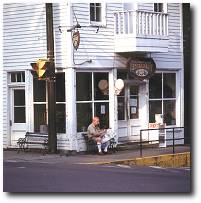
Hob Nob Corner Restaurant, Nashville
Indiana Dept. of Commerce
Welcome to Indiana. From the days of wilderness explorers to the present, Indiana has served as the crossroads of America. Its physical location has destined the state to be a corridor for movement from north to south and east to west. For the French trappers and traders, Indiana was the link between Canada and Louisiana, giving birth to the settlement of Vincennes. The British saw Indiana's strategic importance, and took over in 1763. After the American Revolution, and the War of 1812, settlers continued to move through, arriving via the waterways and overland, and by 1816 when Indiana gained statehood, 60,000 people had settled here. Then, prior to the Civil War, the Underground Railroad flourished throughout the state, and Indiana became a conduit to freedom in Canada for thousands of fleeing slaves.
Today, Indiana still claims to be the Crossroads of America. Indianapolis is the junction of interstate highways, and serves as the base for many of America's trucking lines. Combined with the state's manufacturing and industrial base, Indiana's transportation systems continue to keep America on the move.
THE STATE NAME:
Indiana was the name given to the Indiana Territory by the United States Congress when Indiana was created from the Northwest Territory in 1800.
It means "Land of Indians."
THE STATE NICKNAMES:

Capitol Plaza, Indianapolis
The Hoosier State
In an 1831 letter from G.L. Murdock to General Tom Tipton, Mr. Murdock states "Our Boat will [be] named the Indiana Hoosier." On January 1, 1833, the Indianapolis Journal used John Finley's poem, "The Hoosier's Nest" as their "Carriers' Address".
Indiana may have been referred to as "The Hoosier State" since the early 1830s. There are many explanations for this nickname, some of them quite illogical and humorous and others believable. Like many nicknames, Hoosier may have been used contemptuously to refer to the people in Indiana.
The Who's Here Story - This explanation builds on the story that Indianans were a nosey lot who called out "Who's here?" to every house they passed. A variation of this theory has the inhabitant of the house calling "Who's yere?" when a visitor knocked on the door. The story goes that "Who's here" or "Who's yere" eventually evolved into the word "Hoosier."
The Who's Ear Story - Another sound-alike story, this one perpetrated by James Whitcomb Riley, "The Hoosier Poet [Link to collected works]," facetiously suggests the term "Hoosier" was born of the unruly and pugnacious nature of the early settlers in Indiana. Early Indianans fought viciously during tavern brawls, gouging, scratching and sometimes biting off a nose or an ear. So common were these incidents that when a settler entering a tavern the next morning saw an ear on the floor, he would nudged it casually with his shoe and ask "Who's ear?"
The Fighting Indianans - One story asserts that the term Hoosier came from the bullying and rambunctious Indiana rivermen, always ready for a brawl, who were reputed to be quite successful in coming out on top, "hushing" their opponents. They became known as "Hushers" and eventually "Hoosiers."
Mr. Hoosier - It is said that a contractor named Hoosier liked to hire Indiana men for work on the Louisville and Portland Canal. These men became known as "Hoosier's men" and later, "Hoosiers."
The Indiana Historian - Jacob Piatt Dunn, Jr., Indiana historian and longtime secretary of the Indiana Historical Society found that the word, "hoosier" was used, in the south, to refer to woodsmen and rough hill people. Mr. Piatt traced this word back to England and the word "hoozer," meaning anything large in the Cumberland dialect. This was derived from the Anglo-Saxon "hoo" meaning high or hill. Mr. Pratt suggests that this word was brought from England and applied to people who lived in the southern mountains. This word then migrated north to the southern hills of Indiana. "Hoosier" is still sometimes used in the southern United States to characterize someone who is less then sophisticated, or more bluntly, an "ignorant rustic."
The Methodist Preacher - It was originally put forth by William Pearson in the June, 1995 issue of the "Indiana Magazine of History," that the term "Hoosier" was derived from the name of a southern, black Methodist preacher named Harry Hoosier. According to William Pearson, Hoosier served white ministers and preached when allowed. Harry Hoosier was an excellent speaker and one of the most dynamic preachers of his time.
According to Pierson, some were disturbed by an anti-slavery african-american man preaching to multiracial audiences and Hoosier was especially disliked by Virginia Baptists. Animosity toward "Black Harry Hoosier" may have caused a negative veil to settle on the name that may have eventually evolved to mean someone who was ignorant and/or uncouth. Of course, like many nicknames, originating as slurs, the negative conotation has been lost to history.
Crossroads of America
Indiana is sometimes as the "Crossroads of America." This is the Official State Motto of Indiana.
THE STATE CITIZENS:
People who live in or come from Indiana are called Indianans or Indianians or... they're called Hoosiers.
THE STATE QUARTER:
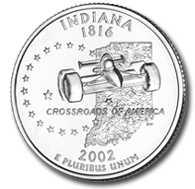
United States Mint Image
The Indiana state quarter was officially unveiled on August 8, 2002 at Indianapolis Motor Speedway. It is the 19th quarter to be released in the U.S. Mint's 50 State Quarter program and the fourth to be released in 2002.
The Hoosier State's quarter is centered around a modern "Indy" car calling attention to the world-famous Indianapolis 500 and the Indianapolis Motor Speedway. The racer is superimposed over an image of the state and seems to roll out of the circle of 19 stars. Below the car is the inscription CROSSROADS OF AMERICA. 1816 is the year that Indiana was admitted to the union.
For more about the state commemorative quarters, visit this page.
This 50 State Quarter Map is a great way to collect and display all 50 State Quarters.
Sources...
The Indiana Historical Bureau, 22 September 2002. Indiana State Library
Monroe County Public Library, What is a Hoosier, 22 September 2002 Monroe County Library
Carpenter, Allan & Provose, Carl. The World Almanac® of the U.S.A.. World Almanac Books (An Imprint of K-III Reference Corporation, A K-III Communications Company). Mahwah, N.J., 1996.
Shankle, George Earlie. State Names, Flags, Seals, Songs, Birds, Flowers, and Other Symbols. Irvine, Calif.: Reprint Services Corp, Revised edition, 1971.
Shearer, Benjamin F. and Barbara S. State Names, Seals, Flags and Symbols: A Historical Guide Third Edition, Revised and Expanded. Westport, Conn: Greenwood Press, 3 Sub edition, 2001.
Additional information
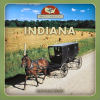
Indiana
by Bettina Ling
Indiana (From Sea to Shining Sea), by Bettina Ling. 80 pages. Publisher: Scholastic Library Publishing (February 2003) Reading level: Grades 3-5. Presents information about Indiana's people, geography, history, landmarks, natural resources, government, state capitol, towns and cities, and more.
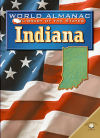
Indiana
by Lynn Brunelle
Indiana (World Almanac Library of the States), by Lynn Brunelle. 48 pages. Gareth Stevens Publishing (January 2002) Reading level: Grades 4-6. Filled with the most up-to-date information, including the latest Census results. Full-color photos bring to life the story of Indiana. In addition to an in-depth factual profile of Indiana in the form of a state Almanac, this book offers fascinating and lively discussions of the state's history, people, geography, government, economy, culture, and lifestyles. A section on Notable People, a calendar of events, and enough primary source documents, time lines, maps, and other tools to make this unquestionably the best young adult reference material on the USA available anywhere.
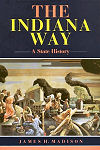
The Indiana Way
by James H. Madison
The Indiana Way: A State History, by James H. Madison PhD. 364 pages. Indiana University Press (August 1, 1990) This book covers the history of the Hoosier State from prehistoric times to the present, paying particular attention to the social, economic, cultural, and political contexts in which the state's significant historical figures, both heroes and villains, played out their roles. Published by Indiana University Press and the Indiana Historical Society.



